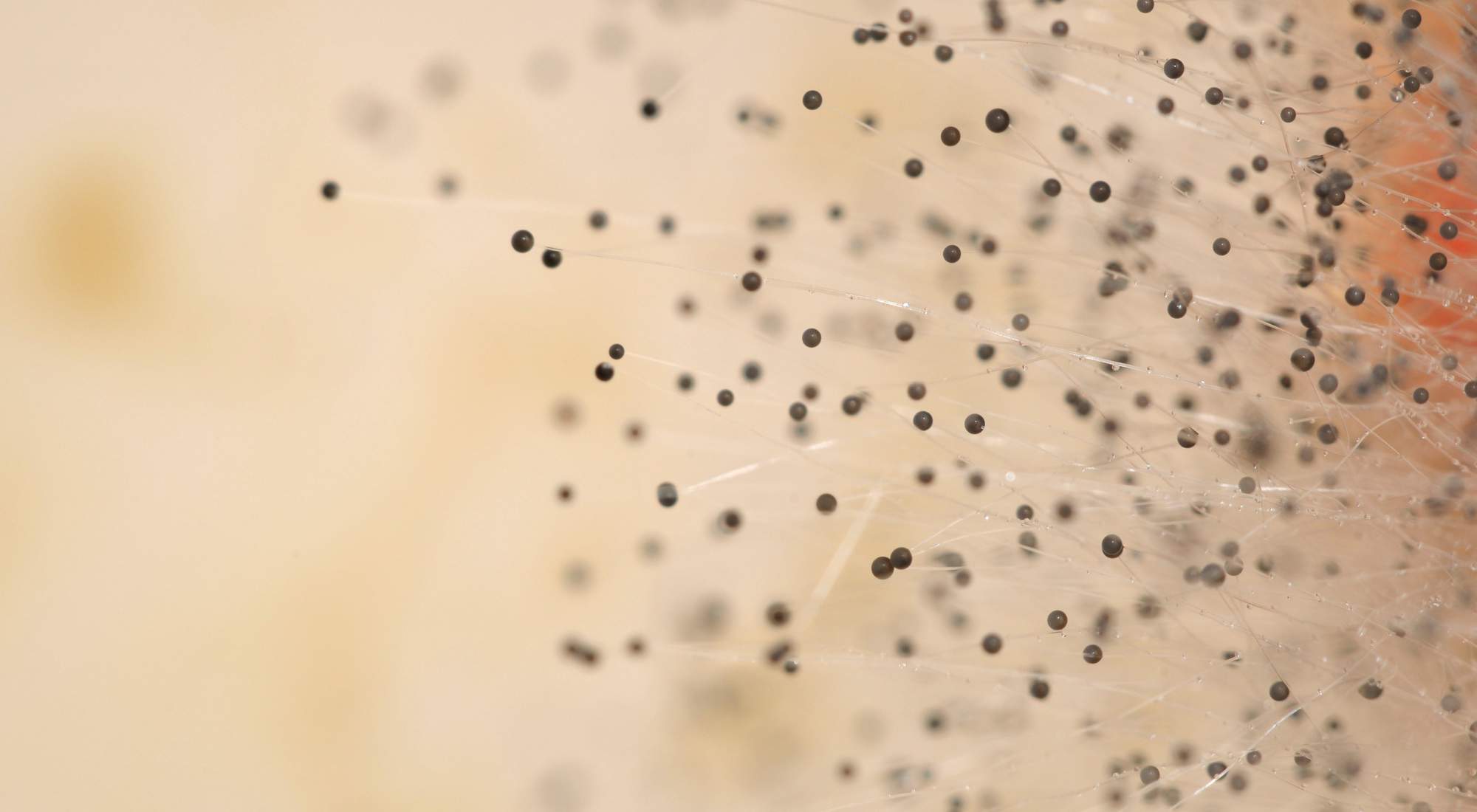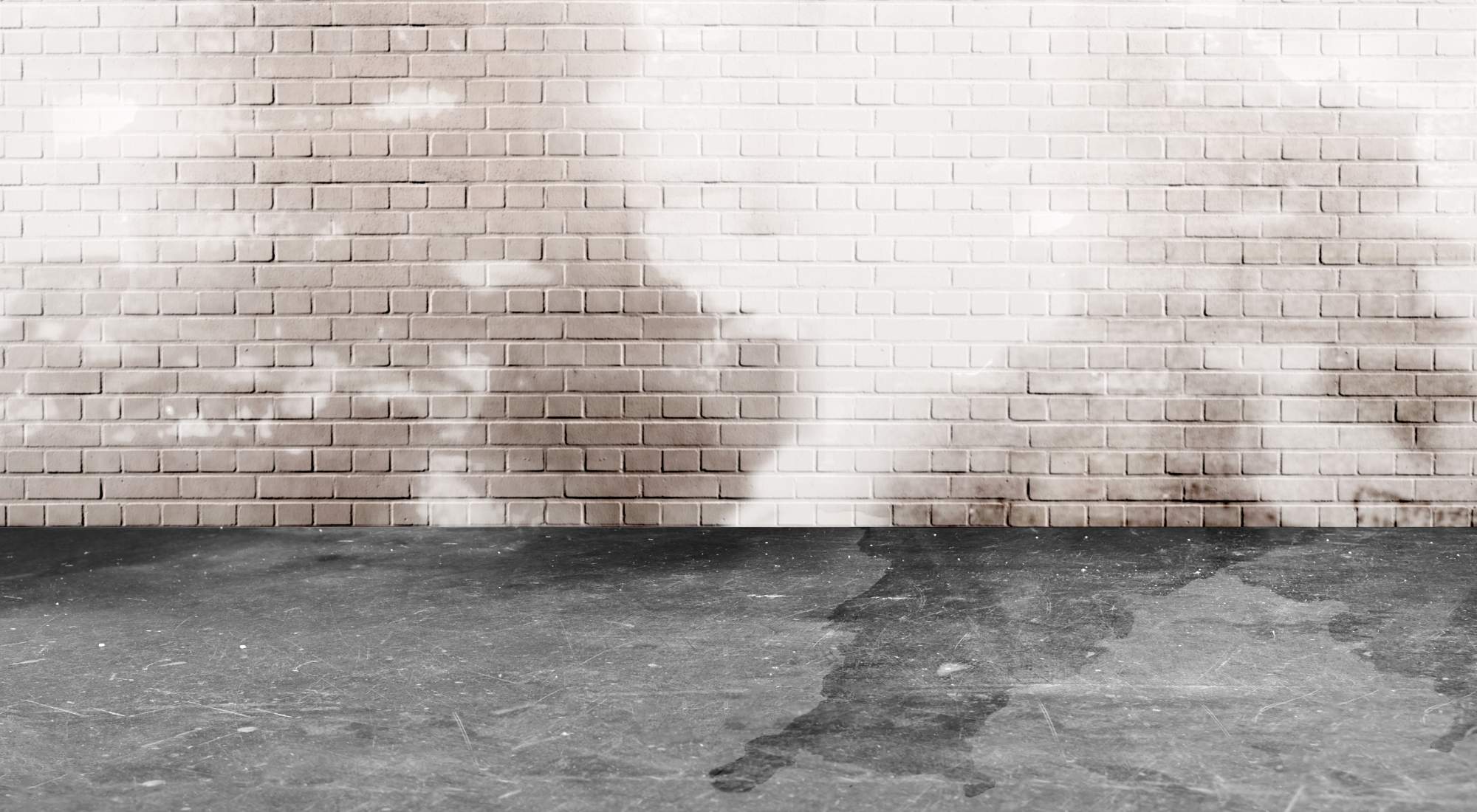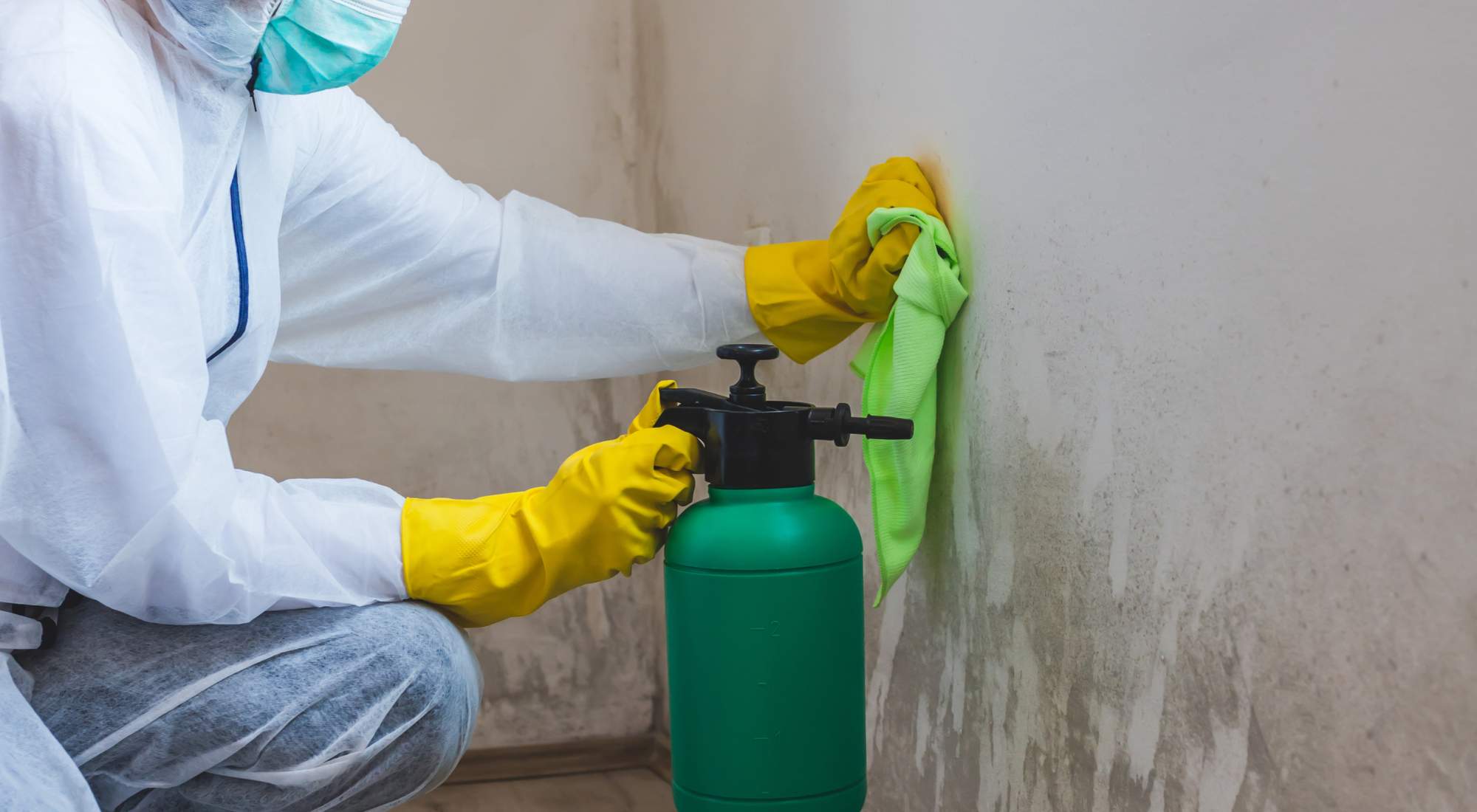If you have a basement, especially an unfinished one, you may not think about it on a regular basis. Sure, you often go down to do a load of laundry or get something out of storage, but you don’t consider it part of the living area of your home.
Lately, you’ve noticed a damp feeling when you enter the basement. Or you may even see some little fuzzy patches growing in the corners.
If there’s mold in the bottom level of your house, should you be worried about it spreading to other areas? Can a damp basement affect upstairs rooms?
Yes, you should be concerned about mold in your basement affecting the upstairs. We’ll explain why and then tell you the most important things you can do to prevent and destroy mold in your home.
Table of Contents
- Can Mold in a Basement Affect the Upstairs?
- Can Mold Spores Travel Upstairs?
- The Dangers of Basement Mold Traveling Throughout Your Home
- Avoiding Issues Caused by Spreading Mold Starts With Prevention: Getting to the Root of Potential Problems in 5 Steps
- Treatment: Call in the Professionals
- Keep Mold From Moving Throughout Your Home With Pure Environmental’s Air Filtration/Purification and Mold Remediation Services
Can Mold in a Basement Affect the Upstairs?
Should you worry about mold in the basement?
You may think that because the basement is separated from the rest of the house that any mold found there will be contained within its walls. Perhaps you even keep the door to your basement closed tightly so that whatever is down there stays down there.
Or maybe because you know that mold grows in moisture, you think the upstairs part of your home is safe because it isn’t humid or doesn’t have any leaks.
The problem is, it doesn’t work that way. If you have mold anywhere in your home, it spreads by tiny little spores that can travel to every other room. If air can go there, mold can go there.
Can Mold Spores Travel Upstairs?
Mold spores can travel anywhere, including to the upper levels of your home.
They can be carried from your basement to other parts of the house through the HVAC system, on clothing, skin, personal belongings — even your pets can spread mold spores throughout your home.

To Figure Out How Mold Spreads, You Need to Understand the Biology of Mold
Think of a mold colony as a teeny, tiny little forest. It has:
- Roots embedded in whatever it’s growing from
- Fruiting bodies (akin to a tree); and
- Spores, which are like the pine cones of the tree
Just as pine cones disperse seeds allowing more trees to grow, spores are microscopic, airborne bodies that can spread throughout your home and cause mold to flourish.
When you start to see that 3D, fuzzy growth, the mold is already kicking out spores. In fact, this may have already been happening for a while on the inside of the wall where you can’t see it.
Once mold spores land in a new place with a moisture source, they will start to grow there — often in as few as one or two days (though not producing visible growth for a couple of weeks).
Modern construction techniques are great for boosting energy efficiency, but these ways of making homes more airtight mean there’s not much flow between the indoors and outdoors.
So if you’re doing something inside to produce moisture, like cooking or showering, that water has to go somewhere in the house. That’s one reason you so often see mold in bathrooms.
The Vehicles in the Home That Help Mold Travel
Mold spores become airborne and can be spread throughout the house via the HVAC system. But they can also travel from the basement to the rest of the home on:
- Clothing
- Skin
- Hair
- Shoes
- Pets
- Items stored in the basement and moved elsewhere
- Etc.
Mold can also travel through your home through something called the stack effect or chimney effect. This describes the way air travels in a building.
As the air in your house warms, it rises up and travels through the upper levels of the house before escaping out the roof. New air is constantly rising up to replace the old. The problem here is that if any of the rising air is contaminated with mold, it constantly spreads to new areas of the home.
The Dangers of Basement Mold Traveling Throughout Your Home
Can mold in a basement make you sick? It might.
People get exposed to mold all the time and it’s not an issue. Mold is all around us, especially in a natural, outdoor environment. Mold is crucial to our ecosystem because it breaks down organic matter like dead trees or fallen leaves.
The problem occurs when people who are immunocompromised or have allergies, asthma, or mold sensitivities are breathing in mold spores indoors. This can cause reactions such as:
- Chronic fatigue
- Migraines
- Colds
- Skin problems
- Stuffy nose
- Itchy, watery eyes
- Wheezing
- Fever; or
- Shortness of breath
Avoiding Issues Caused by Spreading Mold Starts With Prevention: Getting to the Root of Potential Problems in 5 Steps
Mold is all about moisture. Condensation on walls and inside windows is a warning sign. So when you’re dealing with a mold issue, the first problem you have to solve is how the moisture got there in the first place.
Mold in a basement is typically indicative of a bigger problem like:
- Leaky pipes
- A hole in the home’s foundation
- Roof gutters backing up and water pouring down into the home
- Etc.
Prevention is key — keeping your house dry is incredibly important. Any materials in your home like wood or paper should have less than 15-20% moisture content.
Here are our recommended steps for keeping that water out in the first place.

Step 1: Seal Your Basement
First, do everything you can to prevent water from being able to enter your basement. This includes sealing …
- Cracks and openings in the floor and walls
- Areas around windows
- Borders of doors
… to provide protection from moisture damage and flooding. You should be able to find a waterproofing membrane or sealant to help you accomplish this.
Step 2: Minimize Moisture With Necessary Repairs
Keeping your basement dry is key to avoiding mold growth.
Make sure to inspect your home thoroughly and repair any leaks, cracks, or holes in the foundation you see. If you aren’t sure how to do this yourself, contact a professional waterproofing contractor.
You should also maintain a regular schedule of keeping your gutters clear to ensure that water is able to properly drain away from your home.
Step 3: Use a Dehumidifier
Basements tend to feel damp because they’re mostly underground, and this can be exacerbated even more if you live in a humid or rainy climate. Mold thrives in high humidity, so one way you can combat this is by using a dehumidifier.
These come in a variety of sizes, so be sure you get one that’s big enough for the space you’re putting it in. You can hang it from the ceiling or place it on the floor — just be sure to check it often to make sure humidity levels are at the optimum 30-50% or lower.
Step 4: Keep Your Basement Clean and Sanitized
Mold thrives in damp, dark, and cluttered places — does that sound like your basement space?
Make the basement part of your regular cleaning routine and wipe down its surfaces with a vinegar or bleach solution each week. If you see any spills or leaks, clean them up or tend to them as soon as possible.
You should also let in as much natural light as you can to combat mold growth, so open those curtains and blinds in basement windows often.
Step 5: Inspect and Service Your HVAC System Regularly
Inspections are an important part of mold remediation. Since we know your HVAC system is a big part of how mold spreads throughout the home, it’s important to keep it in tip-top shape.
Be sure to replace your filters regularly. Have the unit serviced and inspected for leaks or cracks as often as your HVAC company recommends. It’s also a good idea to have the ductwork inspected and cleaned every few years.

Treatment: Call in the Professionals
People may think they can get rid of mold in their homes themselves, but this isn’t a good idea. Over-the-counter products only take care of the mold you can see on the surface. If you just treat the symptoms without addressing the cause, your mold issues will keep coming back.
Your best bet is to hire professionals to get to the root of the problem. The pros at Pure Environmental are highly trained to find and eradicate moisture in your home that is causing mold. We treat mold at the source.
We can also install an air filtration and purification system in your home to help keep mold at bay and have you breathing the cleanest air possible.
Keep Mold From Moving Throughout Your Home With Pure Environmental’s Air Filtration/Purification and Mold Remediation Services
Mold not only looks gross and makes your home smell musty, but it can also cause health problems. Mold in your basement can affect the upstairs, so don’t wait until it spreads throughout your home to ask for help.
Pure Environmental is the company to call if you need mold remediation and air purification in Portland, OR, and Tacoma, WA, plus surrounding areas.
Our team is highly skilled at mold remediation. If any area of your home — from the basement to the attic — has a mold problem, we can help! We ensure the abatement process is thorough and comprehensive, allowing your space to be mold-free.
We can also help with …
- Odor removal
- Bed bug treatment; and
- Disaster restoration
… if you need any of those services. Contact us today and request an estimate.
Recent posts
- Should You Stay or Should You Go? Know When To Walk Away From a House With Mold
- How To Get Rid of Weed Smell: Top Tips To Help Cannabis Users and Growers Keep Their Homes Smelling Fresh and Clean
- HVAC System Longevity and Understanding When It’s Time To Replace Yours
- How To Remove Mold From Basement Walls: Guidance for Safe Mold Removal Practices
- Uncovering the Truth About Black Mold: A Guide, FAQs, and More
